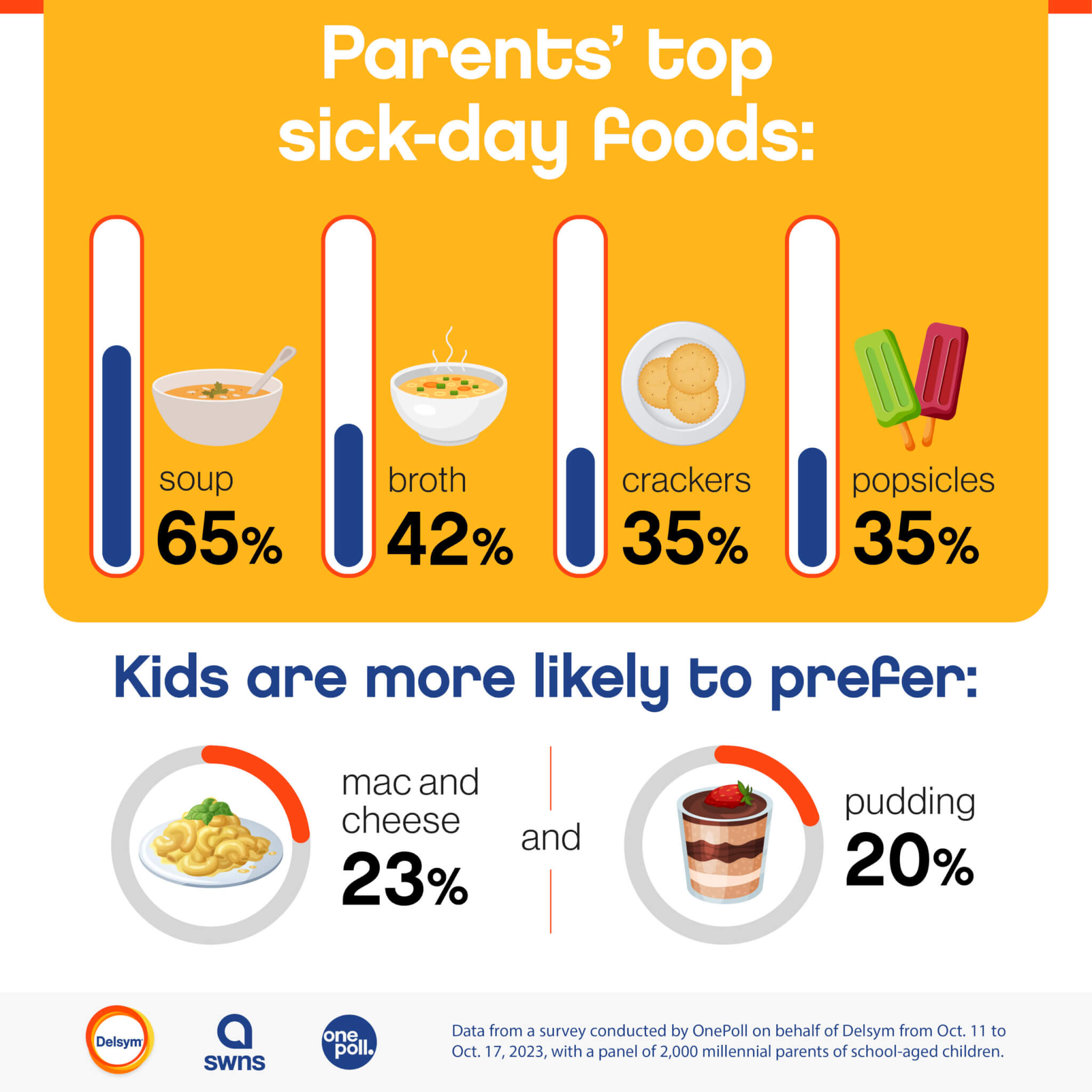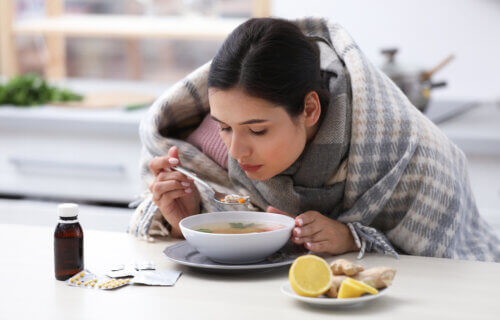NEW YORK — It takes less than 30 minutes for young parents to start feeling better after indulging in their favorite sick-day foods. That’s according to a survey of 2,000 millennial parents of school-aged children. Results reveal that soup (65%), broth (42%), crackers (35%), and popsicles (35%) top the list of parents’ favorite comfort foods.
Some less common (but still popular) comfort foods include stew (21%) and pasta (14%). While the top sick-day foods list is similar for kids, youngsters who are feeling under the weather are more likely to prefer mac and cheese (23%), toast (21%), pudding (20%), and oatmeal (14%) than their parents.
When asked about their least favorite sick-time meals, parents say spicy foods (37%), chili (21%), and ginger (16%) top that list. Interestingly, parents don’t share the same love of mac and cheese with their kids, as 12 percent admit it is their least favorite comfort food.
Conducted by OnePoll on behalf of Delsym, results also reveal that the average parent has been enjoying their favorite comfort foods, like honey (27%) or toast (21%), for 13 years.

Sickness strikes an average of three times per year, according to respondents. Once the first person in the household begins showing symptoms, 60 percent of the time, it takes 48 hours or less for others in the home to start exhibiting similar symptoms. Most respondents (68%) admit their child is usually patient zero, more so than themselves (18%) or their partner (11%).
Household responsibilities such as chores and cleaning (62%), running errands (61%), and hobbies (53%) get pushed by the wayside until they’ve recovered. More than one-third (36%) also admit they push cooking to the back burner, pun intended. This may have something to do with the fact that 83 percent of respondents believe they can recover faster if they’re able to properly take a break and rest.
However, that doesn’t mean parents aren’t indulging in their necessary R&R with their kids. When the whole household is sick, families come together and watch TV (71%), take a nap (69%), sip hot beverages (50%), and cook comfort meals (40%).
“When sickness strikes, it’s no secret that it can bring a functioning household to a complete stop,” says spokesperson Albert So, Marketing Director, Upper Respiratory Brands at Reckitt, in a statement. “Not only is it important to let your body recover, indulging in favorite feel-better foods can bring not only symptom relief but bring the whole family together.”
To prepare for sick days, most parents purchase over-the-counter medications (70%), monitor the rest of the household for symptoms (56%), and contact work or school (51%). Others jump straight into changing the bedding (41%) and stocking up on favorite drinks (38%) and meals (28%).
Symptoms that typically keep respondents out of work or school include headaches or migraines (62%), congestion (57%), and a sore throat (55%). While 34 percent try to power through a dry cough, a similar number (32%) would want someone else with that symptom to stay home. Respondents also feel that if someone else has symptoms like a juicy cough (52%), sore throat (51%), and a stomach ache (49%), it’s best to stay away from school or work.
“There is never a ‘perfect’ time to be sick. But the survey reveals that small things like having a clean house (58%) or ready to make comfort meals (55%) can make things much easier,” So adds.
“In fact, respondents shared that many of them (43%) relieve their symptoms by eating soothing or comforting meals. When the whole family is down for the count, spending time with one another can lead to feeling better together.”
Survey methodology:
This random double-opt-in survey of 2,000 millennial parents of school-aged kids was commissioned by Delsym between Oct. 11 and Oct. 17, 2023. It was conducted by market research company OnePoll, whose team members are members of the Market Research Society and have corporate membership to the American Association for Public Opinion Research (AAPOR) and the European Society for Opinion and Marketing Research (ESOMAR).

